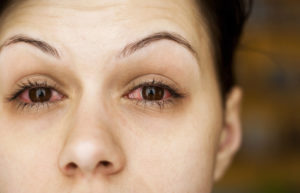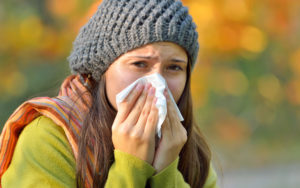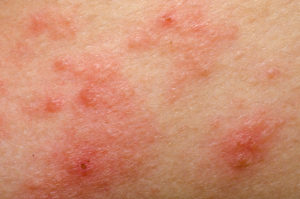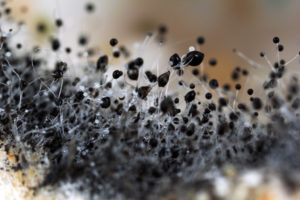Allergist Northern VA
Hay fever and asthma are the most common conditions treated by allergists in the Washington, DC, Northern Virginia, and Maryland metropolitan area.
“Hay fever” is a colloquial term used to describe symptoms caused by allergic rhinitis (i.e., inflammation of the tissues inside the nostrils). An allergist northern VA residents trust is a physician who is an expert and who has received special training in diagnosis and treatment of allergic rhinitis. Our board certified allergist that northern VA inhabitants admire, treats patients at Black & Kletz Allergy. Our allergist has many years of experience in treating both allergic and non-allergic rhinitis as well as many other related conditions such as asthma, hives, sinus problems, and immunological disorders.
Allergic rhinitis is caused by the sensitization of our immune system to allergens in the environment. Re-exposure to these allergens is the actual trigger for symptoms. Allergens include indoor agents such as dust mites, mold spores, and animal dander, as well as outdoor allergens such as pollen from trees, grasses, and weeds. Irritants are agents that can trigger the same symptoms as allergens, however, they do not technically cause allergic reactions like allergens. The symptoms caused by irritants are said to induce non-allergic rhinitis instead of allergic rhinitis which is as previously mentioned caused by allergens. Some examples of irritants may include smoke, chemical sprays, strong odors, exhaust fumes, and other pollutants.
Our allergist northern VA residents respect can test individuals with allergy symptoms in order to identify their specific triggers. Our allergist northern VA inhabitants trust may prescribe various medications such as oral antihistamines, oral leukotriene antagonists, nasal corticosteroids, nasal antihistamines, nasal anticholinergics, and a variety of ocular medications in order to alleviate the unwanted allergy symptoms and improve their quality of life. Our allergist northern VA residents have confidence in can also desensitize individuals to allergens so that their symptoms can be lessened and their medication can be reduced or eliminated.
At Black & Kletz Allergy, asthma is another condition that our allergist northern VA inhabitants trust has expertise in diagnosing and treating. Our allergist northern VA residents admire has many years of experience in treating both allergic and non-allergic asthma.
Both indoor and outdoor allergens play a role in aggravating allergic asthma. Exposure to non-specific irritants such as smoke and strong chemicals can also trigger asthma flare-ups and result in emergency room visits. Coughing, wheezing, chest tightness, and shortness of breath are some of the most common symptoms of asthma. Too many patients end up in emergency departments of hospitals. Many of them require hospitalizations for the management of severe asthma. It is our goal at Black & Kletz Allergy to prevent the need for hospital visits for asthma. Our allergist northern VA residents respect can help in identifying the triggers, minimizing the symptoms and preventing emergency room visits and hospitalizations by prescribing medications and providing an individualized asthma treatment plan.
Our allergist northern VA inhabitants have confidence in also treats hives (i.e., urticaria). Hives or “welts” are itchy, red, swollen blotches on the skin of various sizes and shapes which can occur anywhere on the body. They can last from minutes to days and can be very frustrating for the patient. The condition may last from days to years. Hives interfere with day-to-day activities and may also affect one’s sleep at night. They can be caused by allergies to foods and medications, as well as be triggered by infections. There are numerous causes of hives that need to be addressed when seeing an allergist.
Our allergist northern VA residents trust will perform a comprehensive history in order to try to identify a cause of the hives. History taking is supplemented by a thorough physical examination. Our allergist northern VA residents respect may also order laboratory tests which may help in the diagnosis. The cause however may remain unidentifiable (i.e., idiopathic) in a majority of instances where the hives are of a chronic nature. For acute cases of hives, the likelihood of establishing a cause is much greater than for chronic cases. Our allergist northern VA inhabitants admire has specialized training and long-term experience in identifying the possible cause(s) of hives. It should be noted that even when the cause cannot be identified, our allergist northern VA residents respect can usually provide relief from the annoying symptoms of hives, by prescribing a variety of helpful medications.
The allergists at Black & Kletz Allergy treat both adult and pediatric patients. We have offices in Washington, DC, McLean, VA (Tysons Corner, VA), and Manassas, VA. All 3 of our office locations have on-site parking. The Washington, DC and McLean, VA offices are Metro accessible and the McLean, VA office has a free shuttle that runs between our office and the Spring Hill metro station on the silver line. You may also click Request an Appointment and we will respond within 24 hours by the next business day. Black & Kletz Allergy has been a fixture in the greater Washington, DC, Northern Virginia, and Maryland metropolitan community for over 50 years for our outstanding services for the diagnosis and treatment of allergies, asthma, and immunological disorders.

 Conjunctivitis is the term used to describe the inflammation of the transparent membrane that lines the inside of the eyelids and the eyeballs. Inflammation leads to widening of the small blood vessels in the membrane which causes the redness of the eyes.
Conjunctivitis is the term used to describe the inflammation of the transparent membrane that lines the inside of the eyelids and the eyeballs. Inflammation leads to widening of the small blood vessels in the membrane which causes the redness of the eyes. As we enter into the ragweed season, some of us with seasonal allergies may experience a flare-up of symptoms.
As we enter into the ragweed season, some of us with seasonal allergies may experience a flare-up of symptoms. Outdoor activities in the summer can result in skin irritation and itching due to a variety of causes.
Outdoor activities in the summer can result in skin irritation and itching due to a variety of causes. There are many cause of a cough. Coughing is usually caused by a viral
There are many cause of a cough. Coughing is usually caused by a viral  Allergic Fungal Sinusitis (AFS) is a chronic inflammatory condition involving the nose and sinuses caused by an allergic sensitivity to environmental fungi. It is usually seen in people with normal immune systems as opposed to invasive fungal infections which usually affect people with compromised immune systems caused by conditions which may include diabetes mellitus, certain cancers, HIV infection, and patients receiving chemotherapy or radiation treatment. It is similar to a condition that affects the lung called Allergic Bronchopulmonary Aspergillosis (ABPA).
Allergic Fungal Sinusitis (AFS) is a chronic inflammatory condition involving the nose and sinuses caused by an allergic sensitivity to environmental fungi. It is usually seen in people with normal immune systems as opposed to invasive fungal infections which usually affect people with compromised immune systems caused by conditions which may include diabetes mellitus, certain cancers, HIV infection, and patients receiving chemotherapy or radiation treatment. It is similar to a condition that affects the lung called Allergic Bronchopulmonary Aspergillosis (ABPA). There is a surprising connection between
There is a surprising connection between  Many people think that they are “allergic” to penicillin, when they may not really be truly allergic.
Many people think that they are “allergic” to penicillin, when they may not really be truly allergic.